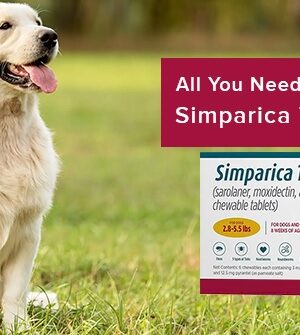Dogs are more than just pets; they’re beloved members of our families, bringing joy, companionship, and a sense of adventure into our lives. However, along with the joys of dog ownership comes the responsibility of proper waste management. Dog waste, if left unattended, poses significant health hazards to both humans and the environment. That is why it is critical to get a pooper scooper near me. We will delve into the various dangers associated with neglecting cleanup and underscore the critical importance of responsible pet ownership in maintaining a healthy and safe community.
Spread of Disease: Protecting Public Health
Dog waste is not merely an eyesore; it’s a breeding ground for harmful bacteria, parasites, and viruses that can pose serious health risks to humans. Pathogens such as E. coli, Salmonella, and Giardia thrive in fecal matter, contaminating soil, water sources, and even the air. When dog waste is left to decompose, it releases harmful microorganisms into the environment, increasing the likelihood of infections and diseases. Proper disposal of dog poop is paramount in preventing the spread of these pathogens and safeguarding public health. By promptly removing dog waste from public areas and disposing of it properly, pet owners can significantly reduce the risk of illness and ensure the well-being of their communities.
Water Contamination: Preserving Environmental Quality
One of the most significant environmental concerns associated with dog waste is its impact on water quality. Rainwater runoff carries bacteria and other contaminants from dog feces into storm drains, rivers, and streams, ultimately polluting water sources and endangering aquatic ecosystems. This poses a posing threat to human health. Responsible dog poop pickup with a pooper scooper is crucial in preventing water contamination and preserving the ecological balance of our natural habitats. By disposing of dog waste in designated receptacles or bagging it for proper disposal, pet owners can help protect water quality and maintain the integrity of our aquatic environments for future generations to enjoy.
Parasitic Infections: Ensuring Pet and Human Safety
Dog waste serves as a reservoir for a variety of parasitic organisms, including roundworms, hookworms, and whipworms, which can infect both pets and humans. Accidental ingestion or contact with contaminated soil or water can result in parasitic infections, causing symptoms such as gastrointestinal distress, skin irritation, and respiratory problems. Children are particularly vulnerable to parasitic infections due to their tendency to play in contaminated areas. By promptly removing dog waste from public spaces and disposing of it properly, pet owners can minimize the risk of parasitic transmission and protect the well-being of their furry friends and fellow community members. Responsible pet ownership entails regular deworming of pets and maintaining good hygiene practices to prevent the spread of parasitic infections in both animals and humans.
Odor and Aesthetic Concerns: Enhancing Quality of Life
In addition to health and environmental considerations, unattended dog waste also contributes to unpleasant odors and aesthetic concerns in residential areas and public spaces. Accumulated feces can attract flies, rodents, and other pests, creating unsanitary conditions and diminishing the overall quality of life for residents. Foul odors and unsightly messes deter people from enjoying outdoor activities and can lower property values in affected neighborhoods. By taking responsibility for their pets’ waste and promptly removing it from communal areas with a pooper scooper, pet owners can contribute to a cleaner, more pleasant environment for everyone to enjoy. Regular maintenance of outdoor spaces, including routine cleanup of dog waste and proper disposal, is essential in preserving the beauty and livability of our communities.
In Conclusion: Promoting Responsible Pet Ownership
As responsible pet owners, it is our duty to ensure that our furry companions do not become a source of harm to ourselves, our communities, or the environment. Proper waste management practices, including regular dog poop pickup and disposal in designated receptacles, are essential in minimizing the health hazards associated with dog waste and maintaining a safe and hygienic living environment. Take proactive measures and seek a pooper scooper near me; demonstrate respect for our neighbors, protect public health, and preserve the natural beauty of our surroundings. Commit to being conscientious stewards of our pets, ensuring that responsible pickup remains non-negotiable in our communities. By working together to promote responsible pet ownership and environmental stewardship, we can create healthier, happier communities for all.














